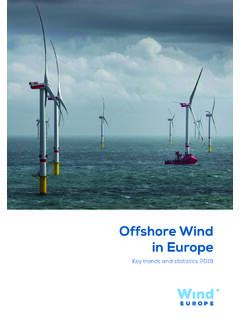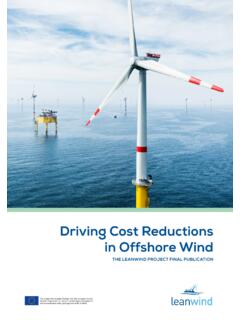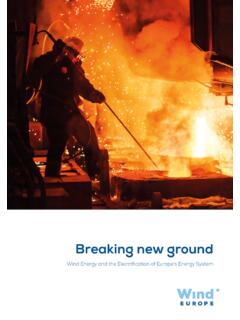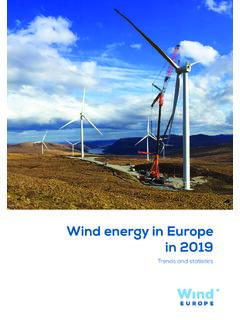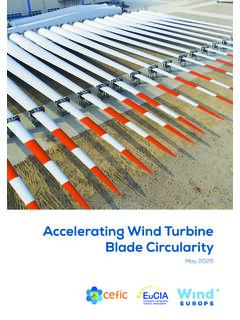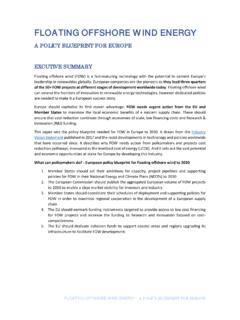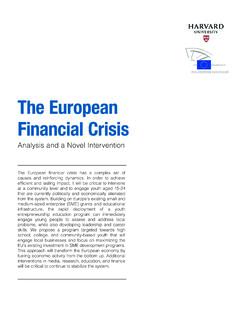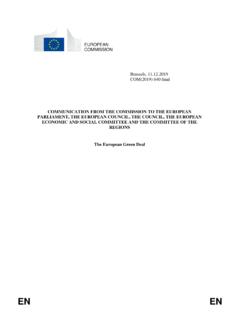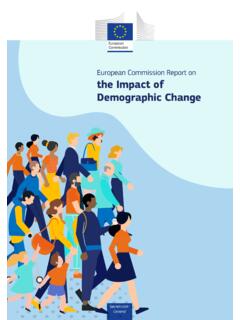Transcription of Wind energy in Europe: Scenarios for 2030
1 Wind energy in europe : Scenarios for 2030 September energy in europe : Scenarios for 2030 September 2017 TEXT AND ANALYSIS:Aloys NghiemIv n PinedaEDITOR:Pierre TardieuDESIGN:Lin Van de Velde - COVER:Florian MartinerieACKNOWLEDGMENTS:Austrian Wind energy Association - IG Windkraft, Belgian Offshore Platform, EDORA asbl, ODE-Vlaanderen vzw, Bulgarian Wind energy Association, Czech Wind energy Association - CzWEA (CSVE), Danish Wind Industry Association - DWIA, Danish Wind Turbine Owners Association, Estonian Wind Power Association - EWPA, Finnish Wind Power Association (Suomen Tuulivoimayhdistys Ry)
2 , France Energie Eolienne, German Wind energy Association - Bundesverband WindEnergie , VDMA Power Systems, Hellenic Wind energy Association - ELETAEN, Hungarian Wind energy Industry Association, Irish Wind energy Association - IWEA, assoRinnovabili, Associazione Nazionale Energia del Vento - ANEV, Latvian Wind energy Association, Lithuanian Wind Power Association - LWPA, Netherlands Wind energy Association - NWEA, Polish Wind energy Association, Associa o Portuguesa de Energias Renovaveis - APREN, Romanian Wind energy Association - RWEA, Asociaci n Empresarial E lica - AEE, Spanish Renewable energy Association - APPA, Swedish Wind energy Association (Svensk Vindenergi), Renewable 2 213 18 68 WindEurope regularly surveys the wind energy industry to determine the likely level of installations in the future.
3 With this report WindEurope provides updated potential deployment Scenarios for wind energy to 2030. EXECUTIVE SUMMARY .. 7 INTRODUCTION .. 111. RECENT EU economic AND REGULATORY DEVELOPMENTS .. 122. MEMBER STATE DEVELOPMENTS TO 2030 .. 153. DESCRIPTION OF THE 2030 WIND energy CAPACITY Scenarios .. 174. SCENARIO ANALYSIS .. 225. MACROECONOMIC AND SOCIAL IMPACTS OF THE Scenarios .. 256. REGIONAL AND NATIONAL DEVELOPMENTS .. 27 CONTENTS6 Wind energy in europe : Scenarios for 2030 WindEurope7 Wind energy in europe : Scenarios for 2030 WindEuropeEXECUTIVE SUMMARYWindEurope updates its capacity Scenarios to 2030 every two years to reflect the latest market and policy develop-ments in the EU.
4 This involves surveying industry experts in every Member State and analysing the potential condi tions that would determine the deployment of wind en ergy, including repowered capacity, in the post 2020 peri-od. This report describes three possible Scenarios for wind energy capacity installations in 2030. It also highlights the impact of each scenario and recommends the policy and other measures that are needed to deliver the Scenarios and sustain europe s technological leadership in to WindEurope s Central Scenario, 323 GW of cumulative wind energy capacity would be installed in the EU by 2030, 253 GW onshore and 70 GW offshore.
5 That would be more than double the capacity installed at the end of 2016 (160 GW). With this capacity, wind energy would produce 888 TWh of electricity, equivalent to 30% of the EU s power demand. In this scenario, the wind en ergy industry would invest 239 bn by 2030 and provide employment to 569,000 people. The increase in jobs assumes that the EU supply chain remains competitive thanks to a robust market a doubling of onshore wind capacity and a fivefold increase in offshore wind capaci-ty and to sustained European leadership in Research and Central Scenario assumes that the EU meets its 27% renewable energy target in 2030 through the adoption of the Clean energy Package proposals presented by the Eu-ropean commission in November 2016.
6 It relies on the implementation of a clear Governance for the Ener gy Un-ion with detailed National energy and Climate Plans de-livering the EU binding targets and effective regional co-operation. It also assumes significant progress in system integration, allowing a higher penetration of wind energy and other renewa bles as well as sufficient grid infrastruc-ture to meet the EU s 15% interconnection target. In the Central Scenario, clear policy commitments on electrifica-tion drive demand for renewable power.
7 In addition, the Central Scenario assumes onshore wind cost reductions continue and that, as a result of governments providing a visible pipeline of projects between 2020 and 2030, the industry s offshore wind cost reduc tion objectives to 2025 are met. According to WindEurope s High Scenario, which as-sumes favourable market and policy conditions including the achievement of a 35% EU renewable energy target, 397 GW of wind energy capacity would be installed in the EU by 2030, GW onshore and 99 GW offshore.
8 This would be 23% more capacity than in the Central Scenario and two and a half times more capacity than currently in-stalled in the EU. Wind energy would produce 1,129 TWh of electricity, equivalent to 38% of EU s power demand. In this scenario, the wind energy industry would invest 351 bn by 2030, 19% more than in the Central Scenario, and it would create 147,000 more jobs, totalling in 716,000 the Low Scenario, there would be GW of wind capacity in 2030, 207 GW onshore and 49 GW offshore, producing of the EU s power demand in 2030.
9 That is 20% less capacity than in the Central Scenario. As a con-sequence the wind energy sector would generate 147 bn investments, 39% lower than in the Central Scenario. The wind industry would represent 132,000 fewer jobs than in the Central Scenario, with a total of 437,000 jobs. 8 Wind energy in europe : Scenarios for 2030 WindEuropeExecutive summaryPOLICY RECOMMENDATIONS The EU should raise its 2030 renewable energy target to at least 35% of final energy demand by 2030 with a clear breakdown per Member State Member States should adopt early National energy and Climate Action Plans based on a binding tem plate providing clarity to investors on the post 2020 market volumes including repowering The post 2020 Renewable energy Directive should mandate Member States to set a schedule for renew
10 Able energy support providing investors at least three years of visibility The post 2020 Renewable energy Directive should set clear design rules for renewable energy support mechanisms, including technology specific tenders, to manage the energy transition Market design rules should maintain priority dispatch for existing wind power plants and ensure new wind plants are dispatched down last and properly compensated in that occurrence Member States should stop capacity payments to polluting power plants through the adoption of an Emissions Perfor mance Standard of 550 g CO2/kWh EU rules on Guarantees of Origin should facilitate corporate renewable PPAs and drive renewables based electrification9 Wind energy in
